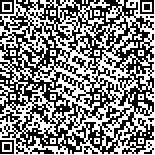| 本文已被:浏览 1042次 下载 171次 |

码上扫一扫! |
|
|
| 高温高速气流中航空煤油横向射流实验研究 |
|
王晓洁1,2,王少林2,3,4,王凯兴2,3,4,潘剑锋1,刘舆帅2,3,4,刘存喜2,3,4,穆勇2,3,4,徐纲2,3,4
|
|
1.江苏大学 能源与动力工程学院,江苏 镇江 212013;2.中国科学院工程热物理研究所 轻型动力重点实验室,北京 100190;3.中国科学院大学 航空宇航学院,北京 100049;4.中国科学院轻型动力创新研究院,北京 100190
|
|
| 摘要: |
| 横向射流是航空发动机加力燃烧室中常见的煤油掺混组织方式。本文使用激光诱导荧光(PLIF)技术,在加力燃烧室的工况条件下,对航空煤油横向射流过程进行测量,研究了液气动量比、气体雷诺数、气体韦伯数对射流深度的影响。通过自编程序对煤油PLIF结果进行处理,获取了横向射流的射流深度。进行了空气来流温度303~1100K,气流速度100~300m/s,液气动量比9~843,气体雷诺数357~4863,气体韦伯数61~716内射流深度的测量。结果表明,射流深度随动量比的增加而显著增大;气体雷诺数的增加增强了动量比对射流深度的影响;射流深度随气体雷诺数的增加而增大,但增大程度随气体雷诺数的增加而减小;射流深度随着气体韦伯数的增加而减小,但气体韦伯数对射流深度的影响相对次要。通过对实验数据的拟合,获得了无量纲射流深度关于无量纲轴向距离、动量比、雷诺数以及韦伯数的经验公式。 |
| 关键词: 航空发动机 横向射流 穿透深度 航空煤油 加力燃烧室 |
| DOI:10.13675/j.cnki.tjjs.2204002 |
| 分类号:V231.2 |
| 基金项目:国家科技重大专项(J2019-III-0004-0047;J2019-III-0006-0049)。 |
|
| Experimental Study on Jet in Crossflow of Aviation Kerosene in High Temperature and High Speed Airflow |
|
WANG Xiao-jie1,2, WANG Shao-lin2,3,4, WANG Kai-xing2,3,4, PAN Jian-feng1, LIU Yu-shuai2,3,4, LIU Cun-xi2,3,4, MU Yong2,3,4, XU Gang2,3,4
|
|
1.School of Energy and Power Engineering,Jiangsu University,Zhenjiang 212013,China;2.Laboratory of Light-Duty Gas-Turbine,Institute of Engineering Thermophysics,Chinese Academy of Sciences, Beijing 100190,China;3.School of Aeronautics and Astronautics,University of Chinese Academy of Sciences,Beijing 100049,China;4.Innovation Academy for Light-Duty Gas Turbine,Chinese Academy of Sciences,Beijing 100190,China
|
| Abstract: |
| Jet in crossflow is a commonly used kerosene mixing configuration in the aeroengine afterburner. In present study, different aviation kerosene jet in crossflow were measured by Planar Laser Induced Fluorescence (PLIF) technique under aeroengine afterburner operating conditions, and the effects of the jet to crossflow momentum ratio, crossflow Reynolds number and crossflow Weber number on the penetration depth were studied. The jet in crossflow penetration depths were obtained from the kerosene PLIF results with an inhouse image processing code. The jet in crossflow penetration lengths was measured in the crossflow temperature range from 470K to 1100K, crossflow velocity range from 100m/s to 300m/s, jet to crossflow momentum ratio range from 9 to 843, crossflow Reynolds number range from 357 to 4863, and crossflow Weber number range from 61 to 716. The results show that the jet penetration depths increased with the increase of the jet to crossflow momentum ratio, the influence of momentum ratio on the penetration depths increased with the increase of the crossflow Reynolds number. The jet penetration depths increased with the increase of the crossflow Reynolds number, the effect from crossflow Reynolds number decrease with the increase of the crossflow Reynolds number. The jet penetration depths decreased with the increase of the crossflow Weber number, while its effect is not significant. By fitting the experimental data, the correlation of the nondimensional jet penetration depths with the nondimensional axial distance, jet to crossflow momentum ratio, crossflow Reynolds number and crossflow Weber number was obtained. |
| Key words: Aeroengine Jet in crossflow Penetration depth Aviation kerosene Afterburner |